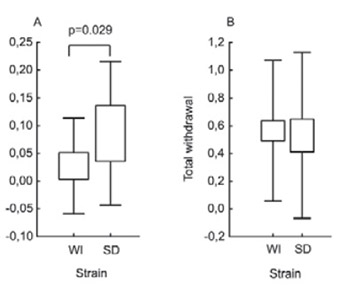Hyperalgesia-Type Response Reveals No Difference in Pain-Related Behavior Between Wistar and Sprague-Dawley Rats
DOI:
https://doi.org/10.17305/bjbms.2007.3065Keywords:
neuropathic pain, rat strain, strain diff erences, pain models, hyperalgesia, pain behaviorAbstract
The experience of pain is variable among certain cultures, ethnical groups and among individuals. This variability can be explained by environmental influence, genetic predisposition and plasticity of the existing neuronal pathways. The purpose of this study was to examine a strain-related difference in pain sensitivity between Wistar and Sprague-Dawley rats strains and if there was a difference, could it be overcomes with the robust test. Mechanical sensitivity e.g. existence of paw withdrawal and complex hyperalgesia-type response after needle stimuli has been measured. Both hindpaws (middle, medial and lateral part) were stimulated randomly in appropriate intervals. The results did not demonstrate statistically significant strain difference in pain sensitivity, except in the lateral part of the hindpaw where Sprague-Dawley rats were more sensitive. This data emphasize the importance of selecting a robust behavior test that will be used in investigation of peripheral nerve injury and in neuropathic pain research.
Citations
Downloads

Published
How to Cite
Accepted 2018-01-25
Published 2007-05-20









